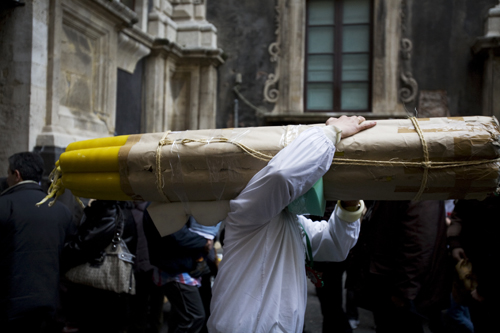 My beeper went off at 4:00 am. It vibrated across the night stand until I reached over and grabbed it. The message read, “Sally Card-pregnant-bleeding-passed out-407-648-5101” Sally was the lab tech in my Ob-Gyn office. She had no high risk factors. Her sonogram did not show placenta previa, a condition that causes bleeding. Placental abruption, separation of the placenta from the uterine wall, crossed my mind. Sally was early, the baby premature. I returned the page. Sally’s husband, Jim, didn’t wait for me to ask questions. “Doctor Gibbs, there’s blood all over the bathroom floor. Sally passed out. She’s lying between the toilet and tub. What should I do?”
My beeper went off at 4:00 am. It vibrated across the night stand until I reached over and grabbed it. The message read, “Sally Card-pregnant-bleeding-passed out-407-648-5101” Sally was the lab tech in my Ob-Gyn office. She had no high risk factors. Her sonogram did not show placenta previa, a condition that causes bleeding. Placental abruption, separation of the placenta from the uterine wall, crossed my mind. Sally was early, the baby premature. I returned the page. Sally’s husband, Jim, didn’t wait for me to ask questions. “Doctor Gibbs, there’s blood all over the bathroom floor. Sally passed out. She’s lying between the toilet and tub. What should I do?”
I knew Sally could die. “Put her in the car and drive to University Hospital. Don’t stop for anything. Have them take Sally straight to the OR. I’m on my way.” I gave these instructions because the ambulance service in their dispatch area was slow. It would take the EMTs twenty minutes to arrive, several minutes to assess her, then fifteen minutes to transport. Per protocol she would be taken to the closest hospital. Eastside had the worst reputation of any hospital in the city. The OB service was managed by doctors, many of whom were not board certified, who took calls from home. There was no neonatal unit. I didn’t want Jim to take that chance.
I drove to the hospital and met them in the pre-op area. Sally had hemorrhaged through her nightgown and down her legs. She was in shock and needed a C-section to stop the bleeding. I checked for fetal heart tones. They were present but slow, indicating distress. We pushed Sally’s stretcher into the OR. The anesthesiologist administered rapid induction anesthesia. I splashed iodine over her abdomen and made an incision with my scalpel. Her uterus was distended and hard. When I opened it, blood poured out. “Give her two units of packed RBCs now,” I ordered. The baby was limp. I lifted him from the uterus. He was pale, almost blue, from lack of blood and oxygen. I passed him to the pediatric team. The neonatologist worked to resuscitate the baby. With the placenta removed, the bleeding slowed. I kept my focus on the surgical field but was relieved when I heard the baby cry.
The emergency had ended. Everyone slowed down and took a breath. I sent the placenta, covered in blood clot, to pathology and closed Sally’s uterus and abdomen. I thanked the OR team and pulled off my stained gloves and gown. My knee-high booties tracked blood that had pooled around my feet after running down the drapes during surgery. I stripped off the shoe covers and washed my hands. Then I looked for Jim.
I found him in the waiting room. He was shaken. I told him everyone would be okay.
He struggled to talk. “I did what you said. Got here in a hurry, but barely beat the train. I raced it to the crossing and cut in front of it. The engine just missed us. I can still hear the whistle.”
—
Thomas Gibbs‘ most recent essays will be published in The Gettysburg Review, The Florida Review, and Blood and Thunder: Musings on the Art of Medicine. He has been included in Lee Gutkind’s anthology Becoming A Doctor. His prose and poetry has been published in The Dos Passos Review, Stone Canoe, The Healing Muse, Hospital Drive, Etude, The Yale Journal of Humanities in Medicine, Zone 3, The Examined Life: A Literary Journal of the University of Iowa Carver College of Medicine, and others.
Photo by Annie Agnone
